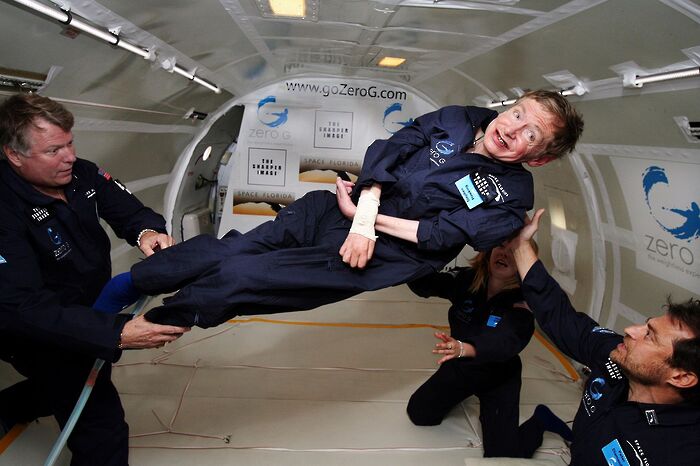Siblings in science: the aurora astrophysicist and the quantum physicist
On the centenary of her brother Richard’s birthday, we remember the incredible work of Joan Feyman on auroras and solar wind, against the odds of being a woman in physics

Friday 11th May marks the centenary of the birth of American theoretical physicist and Nobel Prize laureate Richard P. Feynman. Feynman was renowned for his work in quantum physics, as well as his ability to explain difficult concepts in simple terms. But few know of the work of the other Feynman whose name we should associate with physics. Born nine years after her more famous brother, Joan Feynman, 91, is a physicist in her own right, and has made major contributions to the understanding of auroras.
Growing up in the Feynman household, it was difficult not to become interested in science. Joan Feynman recalls a happy childhood which “had a lot of love in it, both for people and for the scientific world”. Her brother was a great source of inspiration for her scientific career and especially instilled in her an awe of the sky. A significant event in her childhood was being woken by Richard Feynman one night to see an aurora over New York, a phenomenon she would later dedicate her life to studying.
I’ll take auroras and you take the rest of the universe
Despite the encouragement of her older brother, not everyone in her family was supportive of Feynman’s scientific aspirations. Her mother believed women incapable of studying science, yet Feynman all but abandoned her dream of becoming a scientist. It wasn’t until she by chance discovered the work of Cecila Payne-Gaposchkin in an astronomy book that her faith in her scientific abilities was restored and she “knew it could be done”.
Feynman studied at Oberlin College, Ohio and Syracuse University, obtaining a PhD in solid state physics; however, her fascination with the aurora seen in her youth eventually led her to geophysics at the Lamont Observatory in Columbia. During her time there she used data from NASA’s Explorer 33 spacecraft to study the Earth’s magnetic field, or magnetosphere, discovering that it is not a tear shaped bubble, as previously thought, but instead has a large tail pointing away from the sun.
She was the first woman to be elected to the board of the American Geophysical Union in 1974, paving the way for female scientists of the future
Feynman also greatly improved scientific understanding of solar wind, a stream of charged particles travelling at hundreds of kilometres per second from the sun to the Earth. She showed that the direction of the magnetic field of the solar wind relative to Earth’s magnetic field plays an important role in their interactions and the formation of aurora, thus demystifying the unexplained wonder she had witnessed as a child.
Later in her career, Feynman turned her attention to the turbulent bursts of charged particles from the Sun’s atmosphere, called coronal mass ejections, that cause storms in the solar wind. She found that these unpredictable occurrences could be forecasted by observing increased amounts of helium in the solar wind, helping to improve safety for astronauts and equipment in space which may be affected by solar storms.
Feynman has faced many challenges in her career as a physicist. Unemployment, juggling childcare with work and misogyny have all affected her as a scientist and a woman. There was also a light-hearted sibling rivalry between the Feynman siblings leading them to ‘divide up physics’ between them. “I’ll take auroras and you take the rest of the universe,” Joan told her brother, a pact that was honoured throughout their careers.
Despite the challenges, Feynman’s work has been recognised for its significance and in 2002 was awarded NASA’s Exceptional Achievements Medal for her work in geophysics. She was also the first woman to be elected to the board of the American Geophysical Union in 1974, paving the way for female scientists of the future.
On his 100th birthday we can not only thank Richard Feynman for a greater understanding of nature, but also for inspiring the career of his sister Joan Feynman.
 Music / The pipes are calling: the life of a Cambridge Organ Scholar25 April 2025
Music / The pipes are calling: the life of a Cambridge Organ Scholar25 April 2025 News / Candidates clash over Chancellorship25 April 2025
News / Candidates clash over Chancellorship25 April 2025 Interviews / Dr Ally Louks on going viral for all the wrong reasons25 April 2025
Interviews / Dr Ally Louks on going viral for all the wrong reasons25 April 2025 Comment / Cambridge builds up the housing crisis25 April 2025
Comment / Cambridge builds up the housing crisis25 April 2025 Arts / Plays and playing truant: Stephen Fry’s Cambridge25 April 2025
Arts / Plays and playing truant: Stephen Fry’s Cambridge25 April 2025






